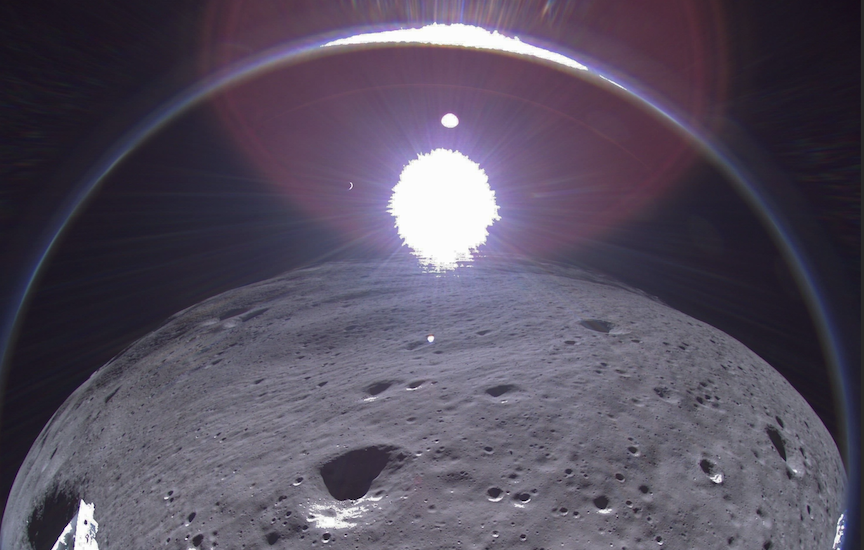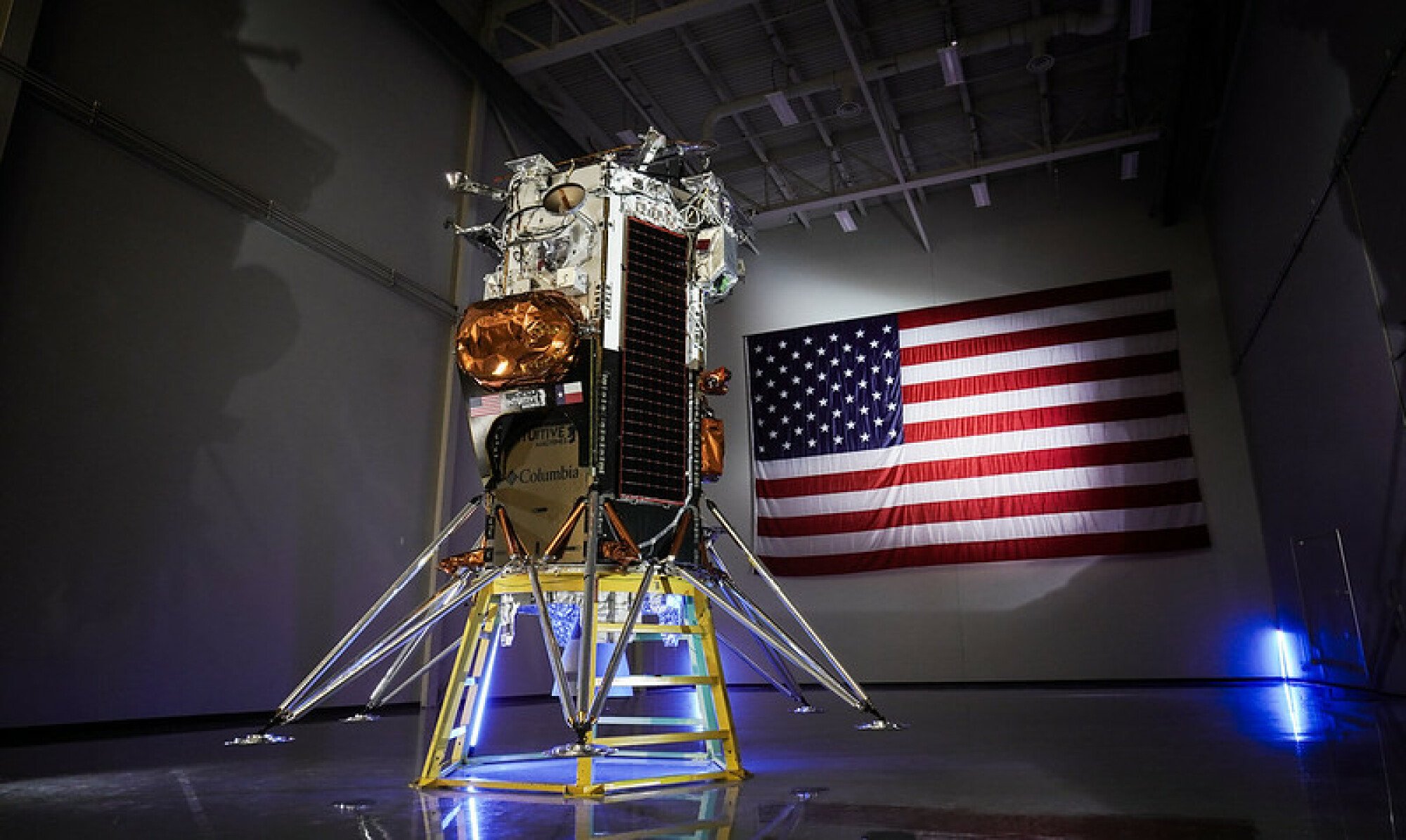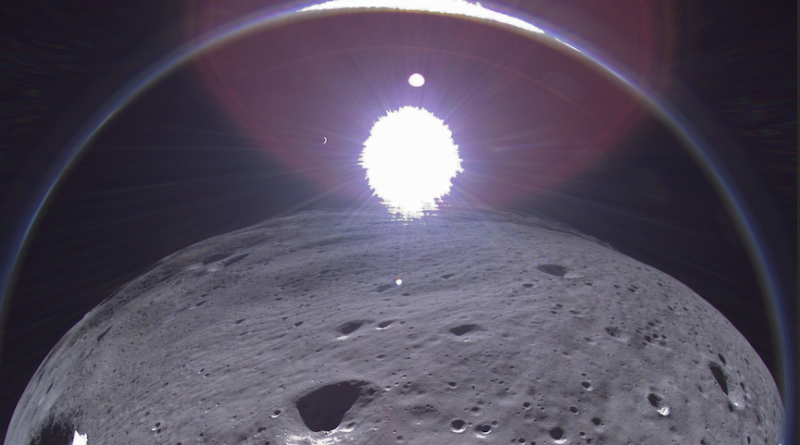Broken moon lander beams back a final poignant photo — of Earth

A spacecraft on the moon is lying on its side. It snapped a leg while landing. And now it’s lost power.
But before the freezing, two-week lunar night swept over Intuitive Machines’ Odysseus moon lander, the robotic craft beamed back one final transmission from space. It shows the cratered grey surface spreading to the lunar horizon. And if you look closely, near top-left you can spot a crescent of shadowed Earth in the distance.
“Before its power was depleted, Odysseus completed a fitting farewell transmission,” Houston-based Intuitive Machines posted on X, formerly Twitter, on Feb. 29.
“Received today, this image from February 22nd showcases the crescent Earth in the backdrop, a subtle reminder of humanity’s presence in the universe,” the company, which became the first to land a commercial mission on the moon, added. “Goodnight, Odie. We hope to hear from you again.”
Indeed, Odysseus may awake from its slumber in mid-March when solar rays hit the lander’s solar panels. Japan’s space agency, JAXA, has a lander (SLIM, which landed upside-down in January) that recently awoke from a similar lunar night. But plummeting temperatures, dropping to some minus 250 degrees Fahrenheit, can damage essential components.
While Odysseus’ landing wasn’t perfect, NASA, which provided $ 118 million for the mission, hailed the challenging Feb. 22 touchdown as a success. Even in a compromised state, the lander beamed back scientific data from all of NASA’s equipment, which included research into space weather and interactions between the spacecraft’s plume and the moon’s chalky surface.
“We hope to hear from you again.”
The mission is part of the space agency’s Commercial Lunar Payload Services (CLPS) program, which picks companies to deliver NASA missions to the moon. This frees the agency, already burdened with an ambitious timeline to return astronauts to the moon under the Artemis program, from having to completely plan and fund missions leading up to human landings. Such a crewed mission won’t happen before 2026.

“This landing marked the United States’ first lunar landing since Apollo 17, as well as the first landing as part of our Commercial Lunar Payload Services initiative, which aims to expand the lunar economy to support future crewed Artemis missions,” NASA said in a statement.
Odysseus landed near the lunar south pole, a coveted region for future exploration, and potentially moon bases. The south pole’s permanently-shadowed craters are believed to preserve bounties of water ice, an invaluable resource for extended lunar missions — and for journeys to worlds beyond.
